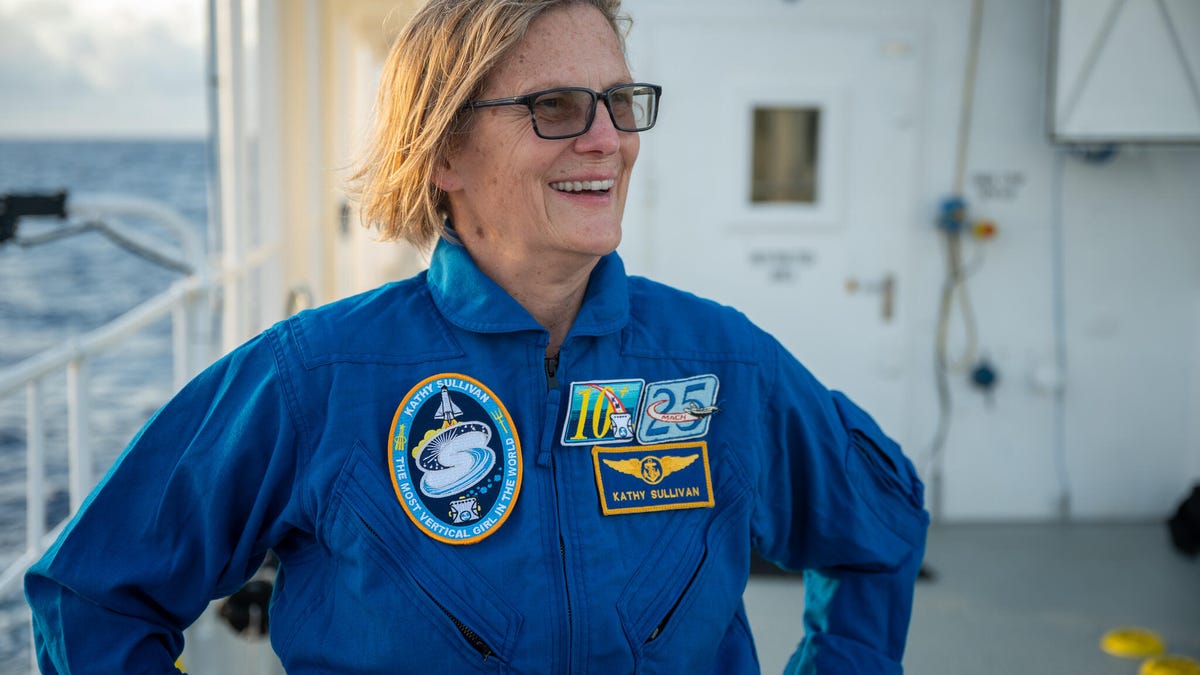From NASA to the Mariana Trench: How Kathy Sullivan became the world's most vertical woman
She was part of NASA's first group of female astronauts and the first US woman to conduct a space walk. But in 2020, she set an entirely new world record.

On June 6, 2020, former astronaut Kathy Sullivan climbed into a titanium submarine and descended nearly seven miles below the surface of the Pacific Ocean. Sullivan and the submarine's pilot, adventurer Victor Vescovo, descended swiftly through the water, at roughly one meter per second.
After 10 minutes, most of the light breaking through the surface was gone. Two hours into the trip, when they'd descended halfway, all photons of light were gone and the view out the porthole was the blackest black imaginable.
After four hours, they reached the bottom of the Mariana Trench -- a place known as Challenger Deep, the deepest part of all the world's oceans. Vescovo finally switched on the lights of the submarine and Sullivan saw the bottom of the abyss for the very first time.
Sullivan had just reached an extraordinary milestone, becoming the first woman to visit Challenger Deep. And thanks to her time as a shuttle astronaut in the '80s and '90s, she'd now traveled 250 miles above the surface of Earth, and seven miles beneath it -- she now held a record as the world's most vertical woman.
When she recalls the moment she first saw the bottom of the Mariana Trench, she says she was thinking of one thing.
"Moonscape was the word that kept coming to mind," she says.
"That experience really did bring back memories for me of watching and listening to the Apollo lunar landings. ... The moment where little bits of sediment start to be stirred up by our thrusters and by our bow wake, made me think of hearing Buzz Aldrin say, 'getting some dust now,' as Apollo 11 was coming in for a landing."
Kathy Sullivan and ocean explorer Victor Vescovo, inside the deep-ocean submersible that took them to the bottom of the Mariana Trench.
For a lifelong explorer like Sullivan, the experience was unforgettable. She'd completed her doctorate in oceanography and had always been fascinated by the deepest, untouched parts of our planet's waters -- the so-called hadal zones, named for Hades, the god of the netherworld.
The Limiting Factor -- a titanium submersible designed to withstand deep-ocean pressures 1,000 times stronger than what's found at sea level.
Now she was seeing this remote place for the first time: The strange, transparent sea cucumbers getting blown like tumbleweeds by the submarine's thrusters. The grooves in the sediment on the ocean floor, made by unseen creatures. The holes in the sand that hinted at strange subterranean life.
In episode 4 of Making Space: The Female Frontier we hear about Kathy Sullivan's greatest journeys. How becoming part of NASA's first group of female astronauts helped her push the door wide open for future generations of women. The exhilaration of reaching space for the first time and becoming the first American woman to conduct a space walk. And why, even at the bottom of the ocean, far from the reach of human civilization, the impact of humans can still be seen.
You can listen to the episode The World's Most Vertical Woman in the player at the top of this story. Or search for Making Space: The Female Frontier in Apple Podcasts, Spotify, Stitcher or wherever you listen.

